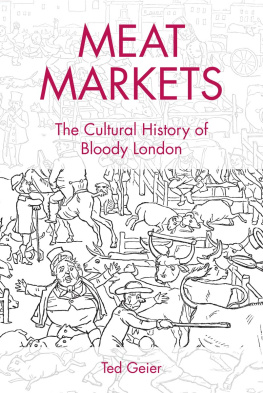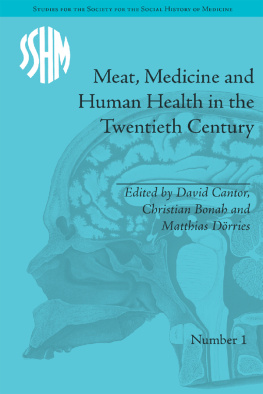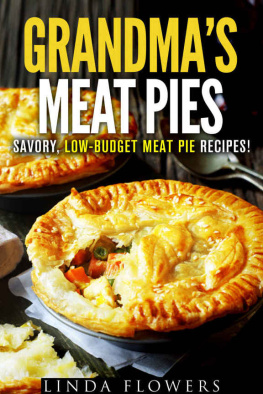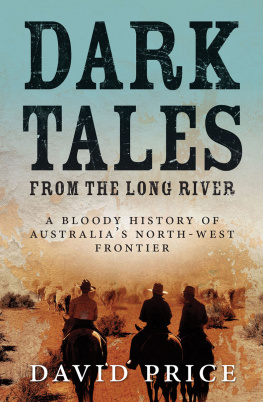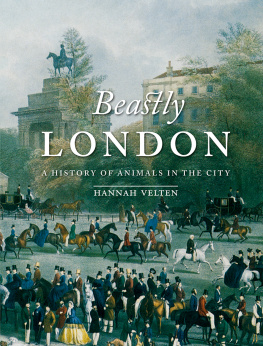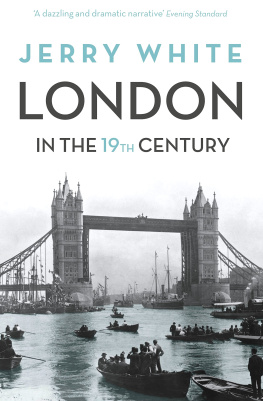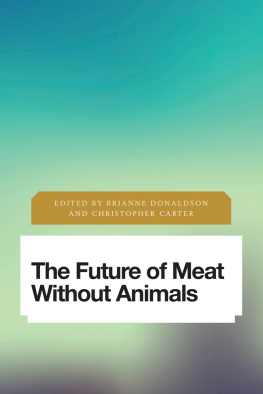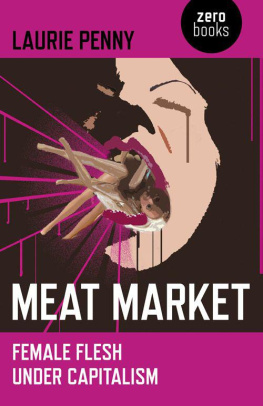Meat Markets
This work is for
families and such, and friends of all sorts
(particularly animal)
And to Rachel,
You are all and we are one.
I love you
Meat Markets
The Cultural History of Bloody London
Ted Geier

Edinburgh University Press is one of the leading university presses in the UK. We publish academic books and journals in our selected subject areas across the humanities and social sciences, combining cutting-edge scholarship with high editorial and production values to produce academic works of lasting importance. For more information visit our website: edinburghuniversitypress.com
Ted Geier, 2017
Edinburgh University Press Ltd
The Tun Holyrood Road
12(2f) Jacksons Entry
Edinburgh EH8 8PJ
A CIP record for this book is available from the British Library
ISBN 978 1 4744 2473 8
The right of Ted Geier to be identified as the author of this work has been asserted in accordance with the Copyright, Designs and Patents Act 1988, and the Copyright and Related Rights Regulations 2003 (SI No. 2498).
Contents
List of Figures
Acknowledgements
Having this work with Edinburgh University Press was always my secret wish, not least because Edinburgh students won the commission for the 2006 commemorative bench at Smithfield I photographed for . The bench is its own constellation of cultural history and literary thought, and the Smithfield story is not complete without a sit. John Lawson Johnston, inventor of the Bovril fluid meat, had his butcher shop in Edinburgh. Edinburgh also brings my long thinking about national bard Robert Burns and animals home.
Being a part of the Edinburgh Animal Studies nineteenth-century literature and theory tradition does me great honour that I surely dont deserve. At Edinburgh, I thank Michelle Houston for her wise counsel and passion for the project, and I thank Rebecca Mackenzie for a stunning cover and further confirmation that Edinburgh is the proper, lively home for such work. Adela Rauchova has also been perfect in every way. Throughout the books completion, James Dale has steered me right, and a brilliant copy editor, Barbara Eastman, made sure I made sense. There are surely others Im forgetting but to whom I am ever grateful. A note of thanks, as well, to the Walkmaster at walklondon. com for permitting use of the Oxo tower image in .
In developing this work, I owe deep gratitude to the UC Davis Environments & Societies (UCD E&S): History, Literature, and Justice Mellon Research Initiative, and especially to my mentors Julie Sze and Mike Ziser. Julie and Mike supported me amidst their myriad other commitments and taught brilliant seminars. UCD E&S provided research funding for my 2013 London expedition, contributing especially to in this work.
I was fortunate to develop portions of this work at several conferences in recent years, and I owe thanks to the UC Davis Office of Graduate Studies and the Graduate Students Association for generous travel awards in addition to my departments unfailing support for my research activity while at Davis. I am grateful to the organisers of these conferences and to the incredible host of key scholars and attendees participating and offering their feedback in those settings. In particular: Miranda Burgess, David L. Clark and Jacques Khalip for the MLA Romantic Period Division Session on Nature in 2014; Kari Weil, Antoine Traisnel, and the excellent Traffic in Animals (19th c.) ACLA 2014 seminar group; Lynn Voskuil, David Thomas and Chris van den Bossche, as well as Joe McLaughlin for excellent feedback and suggestions after my Interdisciplinary Nineteenth Century Studies Conference talk in 2014; Robert McKay and John Miller for the exceptional Reading Animals Conference at Sheffield in 2014, where seemingly everyone wound up for perhaps the finest Animal Studies gathering Ive had the privilege to attend in person; and the entire gang at Society for Literature, Science, and the Arts (SLSA) 2012. I must extend a very special thanks to harlan weaver for the 2013 Funny Kinds of Love conference at Berkeley and for the chance to connect with Colin Dayan, Carla Freccero, Donna Haraway, Robert C. Jones and a multitude of the very best critters. At Rice, Cymene Howe and Dominic Boyer steward an exceptional set of endeavours, and the Anthropology Department hosted me for a talk on Meat Without Animals: The Smithfield System. Thanks to the Department and to the Colloquium participants, some of whom have since become my very favourite friends-from-afar via social media. Thanks especially to my graduate host (himself an emerging voice of great consequence on these matters), Drew Winter. I also presented more work from the book at SLSA in Houston in 2015, where I got to again see favourites like Lynn Turner (one never really sees enough of her) and Antoine Traisnel, and far too many more to count. I also met Alastair Hunt for the first time, who in fact became the last person I talked at length with about these Romantic animals in a vegan restaurant in Portland in October of 2016. Also from my SLSA connections, thanks to Gregg Lambert for his work and his intellectual generosity, and thanks to Aaron Jaffe, especially for pointing out the Joseph Conrad infatuation with Bovril that I continue to ignore.
I was a privileged participant in the 201516 Rice Seminars, After Biopolitics, led by Cary Wolfe and Tim Morton and comprised of an exceptional group of rigorous collaborators and special guests including the inimitable David L. Clark (who reminded me to attend to the rendering in Mary Wollstonecrafts Vindication, among other endless debts I owe to him). Gregg Flaxman instigated sharp inquiry all year, often gathering our coterie of nineteenth-century specialists (Ryan White, Sophia Hsu and Joe Carson) toward the literary and theoretical stakes of this fraught convention, biopolitics, while our guests Wendy Brown and David Wills, in particular, sparked considerations of the creaturely in neoliberalism and the techniques of death, respectively, that have ended up in here at times.
There is a long list of other folks who were at Rice or with whom I convened during the year, but those closest to this task and to life itself during my year in Houston: along my office hall, I had the privilege of daily chats with Helena Michie and/or Alexander Regier. In the Humanities Research Center (HRC), Fars El-Dahdah and Melissa Bailar kept me in line and supported a summer 2016 London venture so that I could speak at Derrida Today (Lynn Turner again!) but also to revisit some of the key sites in this book, including the British Library for a fresh look at some parchment, that revered form of meat-under-glass. Adriana Chiaramonti keeps the HRC in line. Dear friends and partners in crime Alex Tarr, Carolyn Adams and Rex Troumbley ensured that all went well, even when it didnt, and ensured a sustained discussion of poetry, urban spaces and political forms throughout the year that continues to influence my work. More importantly, we had a community instead of just an office. This is, itself, an unlikely thing that the book reflects deeply upon. It matters.
I got to UC Davis from my beginnings on some of these subjects at San Francisco State University, where Saul Steier, Wai-Leung Kwok, Volker Langbehn, Mary Scott and Rob Thomas were my foremost mentors and supporters. James Martel was a kind and invested supporter of the Master of Arts (MA) project I proposed while there, and perhaps one day well get back to it. At Davis, David Simpson was (and is) an especially influential presence, and I would be much less without the intellectual substance he imparts through his own work and teaching, as well as in hosting and enriching scintillating events with, foremost, David L. Clark (yet again!) and James Raven. Mike Martel and I ended up in a two-person Romanticism reading seminar together that remains some of the most generative close reading I have ever been a part of. Tobias Menely, who arrived at Davis as I was leaving, generously shared with me his important work on British animal writing and law, now in the world as

